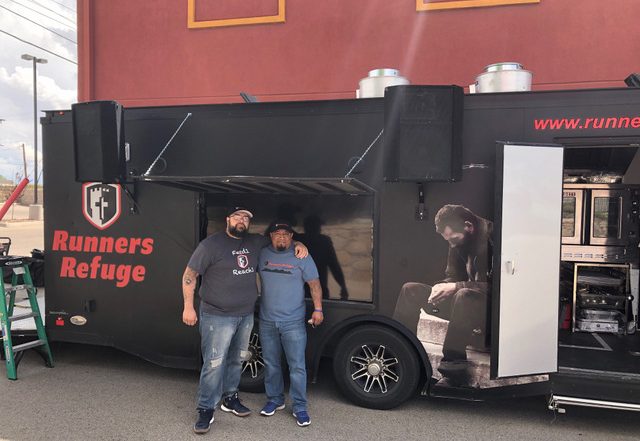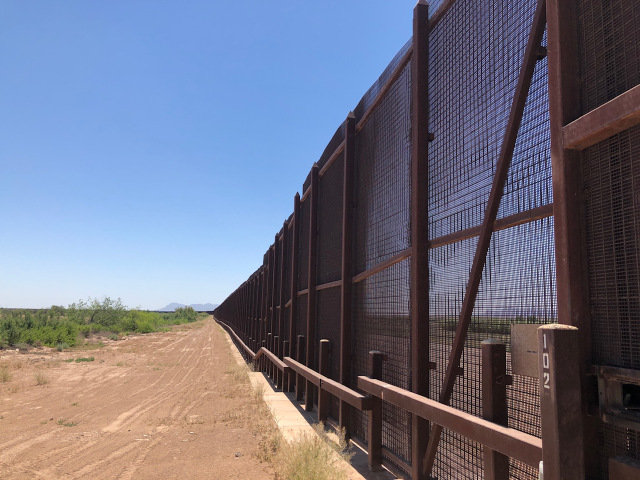Providing aid to migrants at border sites.
Overview:
Over the past two years, many Central American countries have been beset by violence, economic strife and instability. The Northern Triangle countries — Guatemala, El Salvador and Honduras — have been hardest hit leading to a migrant population arriving at the US-Mexico border.
Many of these migrants are young adults with small children and are seeking asylum in the United States. They travel thousands of miles by foot and on train and are detained by the US Customs and Border Patrol. Once detained, migrants are sent to the Immigrations and Customs Enforcement (ICE) sites that process each person or family seeking asylum.
Each file is assigned an A number (“A” for alien) and many families are split into pairs of two—mother with son and father with daughter. Once their papers are complete, they are released to find a way to the closest family or relative they can identify in the U.S. Upon arrival to that location, they are given a local court hearing regarding their asylum status. Each day during this crisis, ICE releases busloads of migrants to local facilities and charities seeking to help with food, clothing, shelter and placement via bus or plane ride. I spent a week in April 2019 assisting with this process and providing basic medical care.
Borderland Background:
I used to live in El Paso when I was stationed at Fort Bliss, TX with the US Army in 2006 and again in 2008.

Panoramic view from Scenic Drive in El Paso.
It is a large binational community of nearly three million people, separated by the Rio Grande River with multiple bridges as ports of entry. When the news of family separations became public in June 2018, I marched in DC, but decided I needed to do more. It took nearly a year of searching, but at last I was able to find and reach out to a local professor helping with the relief. He put me in touch with three pediatricians that have established a healthcare coalition providing free medical care to migrants passing through El Paso.
This medical care is an offshoot from The Annunciation House, which has been a fixture in the community since 1976. Once the latest crisis emerged, community leaders including Director Ruben Garcia have stepped up to help ensure “no migrant is left to the streets.” Annunciation House has been bearing the brunt of supporting thousands of men, women and children with meals, clothing, medicine and shelter.
The Work:
Medical licensure in Texas is quite a lengthy process and challenging. Even though I had been in the system as a resident, I was not able to secure a license in time for my trip (FYI, there are several volunteer license types in Texas that are obtainable in 30 business days!). For this trip, I assisted with translation, preparing food, making phone calls to arrange transportation for the migrants to see loved ones and dropping folks off at the airport or bus terminal. Also, as migrants came into our center each day, we did vitals and exams on folks that appeared ill—had a cough, were malnourished or felt weak, etc.
The small hotel site I worked in with five to six other volunteers was built in the 1970s and mostly desolate except for the folks volunteering and those we were helping.

One of the hotels that became in-processing centers.
Our two team leaders set-up a mini-war room with Cricket cell phones, pens, duplicate carbon slips and several large cork boards to track flights and buses.

Cork board with carbon copy sheets outlining destination of each migrant family, mode of transport and status of that trip.
Spare adjoining hotel rooms were converted to our infirmary, clothing sorting site and food collection/preparation area.

Food pantry—all donated items; we made food bags with peanut butter and jelly sandwiches, snacks, water, fruit and juice boxes for families to have something to eat on their 2-3 day journeys to various parts across the U.S.
The hotel was kind enough to let us set-up three to four work stations where we “in-processed” every family after providing them a hot meal as they arrived from the buses. To my knowledge, there was at least two other similar budget hotel sites being run around the city.
Midweek we held a providers meeting at the largest migrant facility, Casa Refugiado.

Sampling of some of the local physicians and medical students leading the way to establish a refugee medical clinic.
It is a converted warehouse with up to 500 migrants at nearly all times.

Main hall of Casa Refugiado.
The goal was to ultimately develop this space to create a medical clinic and sleeping area. Working with the pediatricians there, we were able to use Partners for World Health and secure medical supplies to help keep the new clinic stocked. We also received dozens of boxes of over-the-counter medications and basic medical supplies from volunteers.
Images:
Each day I was there the sensory overload reached a new threshold—in both good and bad ways.
Perhaps the most obvious and noted “mark” of the Central American migrant was their use of mylar reflective warming blanket strips and plastic bags to replace shoelaces. As detainees, ICE stripped them of belts and shoelaces due to risk of self-injury. Each morning before my intake shift, I would make a run to the local dollar store or pharmacy to buy 20-30 pairs of shoelaces.

Shoelace rainbow.
It was a small gesture, but evoked memories of when my hometown family doctor would give us stickers or a lollipop after a check-up.
One of the coolest moments my first shift was meeting Pastor Anthony Torres and his team from Alamogordo, NM. He runs a non-profit called Runners Refuge (Fig 8).

Pastor Torres and his crew infused a lot of energy and home cooking to uplift the spirits of that day’s migrants passing through the hotel.
He has a massive RV with a full kitchen and TV that they bring across the region. He often goes to the poorest, most violence riddled areas of his town on Sundays to feed those in need. He drove five hours to help feed those in need! He and his staff of eight prepared over 100 meals—salad and spaghetti with meat sauce. It was incredibly heartwarming to witness the goodness and energy in his team and their selflessness towards others!
It was hard to turn off the physician inside me so on some occasions; I would walk a child over to our infirmary. It was a converted hotel bathroom with a few shelves of over-the-counter medications and thermometers. A retired RN, Sister Isabel, from Annunciation House would staff that room and showed incredible compassion and patience to help those with basic medical needs.

Sister Isabel helping a young girl with a cough get some relief.
On my last day, I decided to see the border fence/wall. Driving around El Paso, you can easily see Ciudad Juarez and the Rio Grande. At certain parts of I-10 you can also see the rust-colored, translucent border fencing.
- A section of the Border wall in Texas
I took my rental car to Tornillo, the site of some of the most contentious detention separation policies last year. Tornillo is at once barren and beautiful with open land interspersed with lush pecan farms. I peered into Mexico through a small portal and my mind became still—if ever so briefly.
Stories:
I love reading and learning about history and to me, the work felt like being at a new Ellis Island.

Our workstations were old wooden desks and lots of carbon copy forms and laminated sheets with airline and bus station information.
One young teen mom Monica and her 11-month-old were headed to Chattanooga, TN. Her family put up hundreds of dollars for the flight, but the ticket was never fully paid for, it was just a confirmation number. I was already uneasy about leaving a single mom with a newborn at the airport alone—with no money, phone and that did not speak English. I called and woke up her cousin. He and I texted throughout the night and he confirmed to me early the next morning he bought a new ticket. They flew out the next day before my shift.
Another young family—a father in his 30s with two teenagers was the first family I helped drop off to the bus station. Due to costs and depending on the location of where each migrant’s family lived, the bus was the best option. As we parked and arrived, the station was packed with migrants and folks trying to help them on their way.

Saying “adios y buen viaje (goodbye and safe travels)” at the bus terminal to several young families heading out across the country.
Each bus was at capacity.
Thoughts:
I wish I could say that I had a sense of confidence about the work we did that week. Being an EM doctor, and facing harsh truths every day as we all do in this line of work, I had mixed emotions regarding how these folks we helped would end up doing. All of them had ICE hearings within two weeks of arrival to their family and I suspect many would be immediately deported back home to violence and destruction. Furthermore, many of their family members could also have been illegally in the country. The high cost of one-way fares also likely significantly impacted their families’ current and future financial well-being.
Perhaps the two most difficult parts for me were a) families being split up to get through asylum processing faster and b) we never got to know if the folks we helped made it safely to their destinations.
I can’t say I know what was right or wrong, but I can say that I could not sit by idly. As Mr. Garcia from Annunciation House said at our first providers’ organizing meeting: we are all here because we ‘feel that we can’t simply do nothing.’ I looked at the whole trip and process through the lens of my own family’s journey to the US in the early 1960s.
My father started in Canada, brought my mom over after an arranged marriage in India. They eventually found their way from Toronto to the Bronx and ultimately, Summit and finally, Bridgewater, NJ. It was a meandering yet simultaneously linear path that many Indian-Americans followed in those years. It started with higher educational attainment then going where the jobs were in a given industry—particularly engineering and medicine. As I lived in this moment watching families arrive to the US, fleeing violence and chaos, all I can say is that I tried my best to help fellow human beings in need—with courtesy, decency and respect.
For those interested in volunteering, please email me: Debjeet.sarkar78@gmail.com.












1 Comment
I am near the Mexico border in El Paso Texas and would like to help please contact me at simpsonjesse53@gmail.com